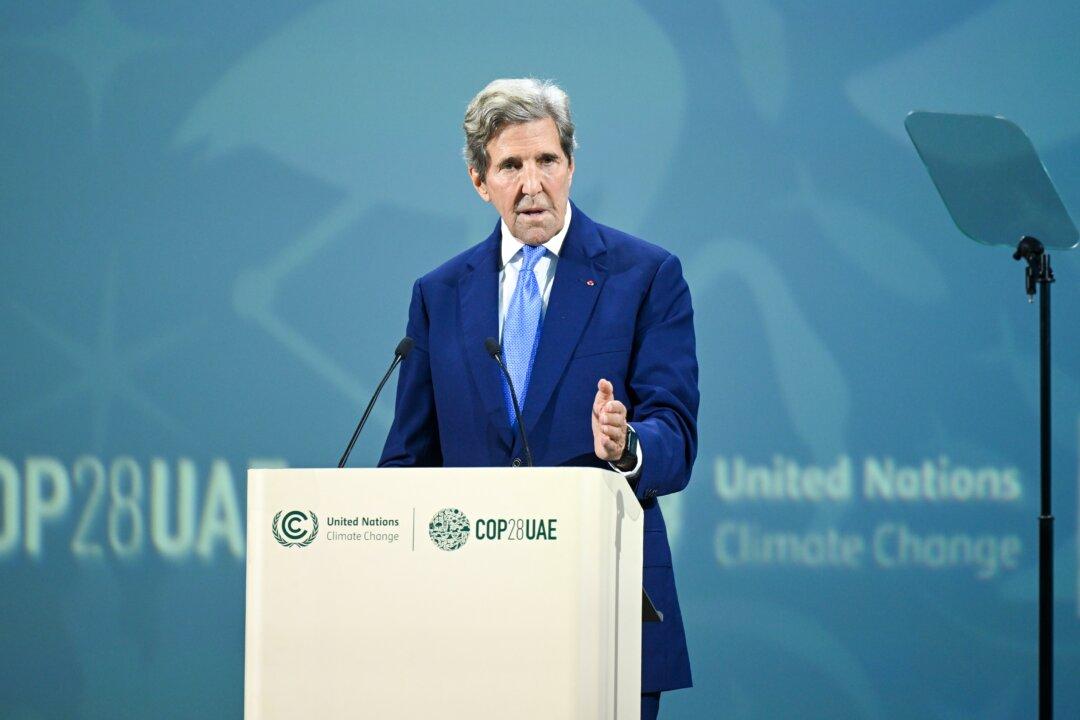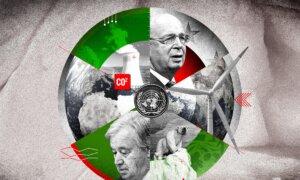The goal is to reduce emissions from such appliances by 68 percent by 2050 compared to 2022 levels.
U.S. climate envoy John Kerry made a pledge with over 60 other nations to slash emissions from refrigerators and air conditioners in a bid to tackle climate change.
On Tuesday, 63 nations, including the United States, joined a
pledge to cut down cooling-related emissions at the COP28 United Nations climate summit in Dubai, United Arab Emirates. The Global Cooling Pledge requires countries to reduce such emissions by at least 68 percent by 2050 compared to 2022 levels. The focus of cooling-related emissions would be on appliances like air conditioners and refrigerators. The pledge also proposes setting up minimum energy performance standards for appliances by 2030.
“We want to lay out a pathway to reduce cooling-related emissions across all sectors but increase access to sustainable cooling,” said Mr. Kerry, who
joined representatives from other countries in the pledge, Reuters reported.
Rep. Jeff Van Drew (R-N.J.)
criticized the pledge in a Dec. 6 X post: “John Kerry lost his run for president & has been trying to assert his revenge on everyday Americans ever since. If he gets his way, our cars, our appliances, and food will be gone. All from a man who flies around on his wife’s private jet.”
Mr. Kerry’s pledge comes as the Biden administration has proposed rules that could harm to the home appliance market. In July, the U.S. Environmental Protection Agency (EPA)
issued a rule to slash the use of hydrofluorocarbons (HFCs) by 40 percent by 2028, calling the chemical a “climate super-pollutant.”
HFCs are used as refrigerants in appliances like air conditioners, heat pumps, and refrigerators. Since January last year, the import and production of HFCs require special allowances. During this time, the costs of replacing refrigerants have spiked.
In an August 2022
analysis, Ben Lieberman, a senior fellow at the Competitive Enterprise Institute, noted, “Service technicians say that replacing refrigerant lost from a leak now costs upwards of $800, about double what it did a year ago.”
“Moreover, EPA’s HFC quotas tighten in the years ahead, so the ratchet will keep turning, surely causing homeowners’ bills to increase further still.”
Earlier in March, the Department of Energy proposed
rules under which refrigerators would be subject to a stricter set of energy efficiency standards. The rule comes into effect in 2027.
Cooling Concerns
At present, cooling equipment
accounts for 20 percent of total electricity consumption. The UN estimates this to more than double by 2050. Emissions from such cooling is projected to account for over 10 percent of global emissions by mid-century.
According to the UN, as temperatures rise,
demand for cooling equipment is also expected to increase. By 2050, installed cooling capacity is estimated to triple due to rising temperatures, increasing incomes, and a growing population.
“The cooling sector must grow to protect everyone from rising temperatures, maintain food quality and safety, keep vaccines stable and economies productive,”
said Inger Andersen, Executive Director of United National Environment Programme.
“But this growth must not come at the cost of the energy transition and more intense climate impacts. Countries and the cooling sector must act now to ensure low-carbon cooling growth.”
One of the proposed ways to cut down cooling emissions is through the use of passive cooling measures like insulation, ventilation, natural shading, and reflective surfaces. The UN estimates that passive cooling could curb the growth in demand for cooling capacity in 2050 by 24 percent.
“Imagine a slum community, an informal settlement, the housing made of corrugated iron, and on the side an air conditioner … The aspiration of everyone as temperatures rise and incomes rise is that their wealth is measured by their cooling,” Freetown mayor Yvonne Aki-Sawyerr of Sierra Leone
said during a COP28 news conference, per Reuters.
Coal Pledge
Mr. Kerry’s pledge follows another climate
commitment he made last week that the United States would not construct any new coal-fired power plants and would get rid of existing ones entirely.
“To meet our goal of 100 percent carbon pollution-free electricity by 2035, we need to phase out unabated coal,” he said in a statement at the Dubai climate summit.
“We will be working to accelerate unabated coal phase-out across the world, building stronger economies and more resilient communities. The first step is to stop making the problem worse: stop building new unabated coal power plants.”
According to
data from the Department of Energy, 19.7 percent of electricity generation in the United States last year came from coal.
In 2022, coal-fired plants
accounted for 36 percent of global electricity, more than half of which came from China, which is building new coal plants at a rapid pace, undeterred by various climate pledges and goals that the country’s own leadership has paid lip service to.
According to a February report by the Global Energy Monitor and the Centre for Research on Energy and Clean Air, coal power construction starts, new project announcements, and plant permissions “accelerated dramatically” in China in 2022—with two new coal power plants being permitted per week.
“50 GW of coal power capacity started construction in China in 2022, a more than 50 percent increase from 2021. Many of these projects had their permits fast-tracked and moved to construction in a matter of months,” the report said.
“A total of 106 GW of new coal power projects, the equivalent of two large coal power plants per week, were permitted. The amount of capacity permitted more than quadrupled from 23 GW in 2021.”
Tom Ozimek and Reuters contributed to this report.







